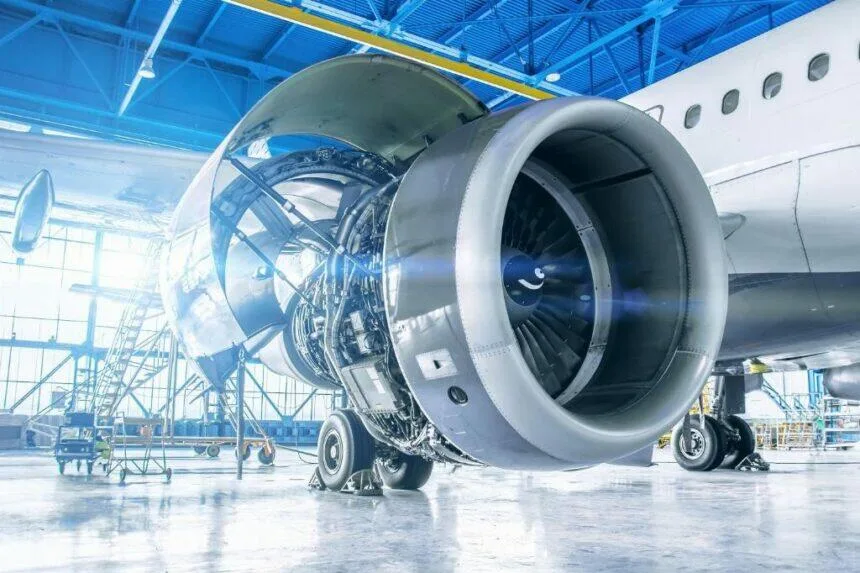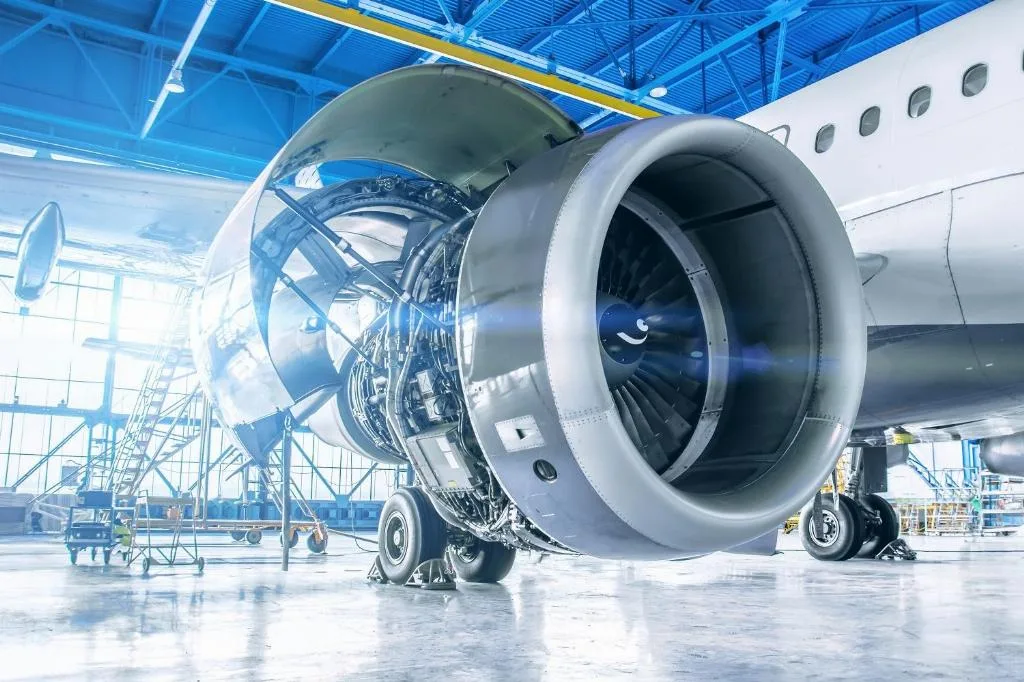Aerospace Technology is a rapidly growing field. With the United States and Russia both heavily relying upon space flight, the field of Aerospace Technology continues to grow as many jobs are created.
Many students have a keen interest in flying and creating new aircraft. Others may want a position in NASA or doing research in aviation. There are also many students who simply want to be involved with the aerospace industry and are choosing to study in universities specialising in this field.
The Bachelor of Science in Aerospace Engineering is designed for students to prepare themselves for various technical and professional positions in the aerospace industry s life cycle.
Students can expect to gain knowledge and experience from an Aerospace Technology curriculum that is grounded in traditional engineering, but also delves into other areas as well such as mathematics and computer science. Students will learn how to design, test, and manufacture aircraft.
The Bachelor of Science Degree in Aerospace Technology addresses issues in manufacturing and flight safety management. This degree can be used to satisfy graduation requirements for flight crew requirements, as well as certification requirements for those working within the aerospace technology field.
These technicians will typically have knowledge of the flight systems of aircraft and know how to troubleshoot problems. Typically, they are responsible for performing basic aircraft maintenance as well as analyzing flight data for potential solutions. They are also required to perform preventive maintenance and training on new flight safety management systems.
Aerospace engineers usually belong to either one of two major groups within the discipline. One is known as functional or structural. These are the professionals who design and build aircraft. The other is called structural or aerodynamic. These are the people who make sure aircraft fly correctly and safely.
Another aspect of aerospace engineering that engineers learn is control systems and computer aided design. These are just two of the important areas of the industry that engineers learn about during graduate-level degrees.
Control systems include flight control displays and software, meteorological controls, and autopilot systems. Computer aided design creates the look and feel of an aircraft by using complex computer software.
Aerospace technology is very closely tied to safety management. Many engineers are responsible for designing, building, and testing various types of safety equipment such as life support systems, electrical systems, and structural integrity systems.
In addition, these engineers must also develop flight guidelines, which set standards for aircraft operation and maintenance.
There are a variety of Aerospace Technology jobs available. These include astronautical engineers, space flight engineers, aircraft maintenance technicians, and safety management technicians.
There are also positions available in the aerospace industry for mission specialists, project managers, and educators. If you are looking to start your own aerospace company or work for a major satellite company, you may want to consider a number of specialties within the field. Some examples include electrical, structural, and computer-aided design.
Aerospace technology is another key aspect of the aviation industry that many people do not know or understand. The correct materials and the correct procedures for launching a spacecraft can make a world of difference when it comes to launching a spacecraft safely.
Many aerospace engineers have made groundbreaking discoveries regarding the perfect materials to use, the most efficient launches, and the way to put a spacecraft into space safely. By educating yourself in this important aspect of the aviation industry, you will be well on your way to a rewarding career in this exciting and growing field.
How Aerospace Technology Is Shaping the Future of Aviation
The sky is no longer the limit when it comes to aviation. Aerospace technology has been advancing rapidly in recent years, and its impact on the aviation industry is undeniable.
With the help of advanced aircraft designs, more efficient engines, and improved navigation systems, the future of aviation is brighter than ever. From commercial airliners to futuristic hypersonic aircraft, today’s aerospace technology is helping to shape the future of aviation in exciting and innovative ways.
From more efficient flight paths and greater safety to more sophisticated aircraft designs and the potential for space exploration, the possibilities for aviation are endless. With the help of aerospace technology, the future of aviation is sure to be full of amazing possibilities.
Overview of today’s aerospace technology
Today’s aerospace technology is revolutionizing the way we fly. From more efficient aircraft designs to improved navigation systems and more advanced engines, aerospace technology is transforming aviation for the better.
And it’s only expected to get better from here. With the help of AI, virtual reality, and blockchain technology, commercial aircraft are expected to become even safer and more efficient. Additionally, the aviation industry is predicted to see a huge increase in the number of commercial flights over the next few decades.
This is thanks in large part to the growing number of people who will be flying for business and leisure. And with more planes in the sky, it’s crucial that the aviation industry is prepared. This is why more advanced aircraft designs will be necessary.
Benefits of advanced aircraft designs
Many of today’s aircraft designs are more than 50 years old, and they’re not expected to last much longer. These old aircraft designs were built with different materials, and they weren’t nearly as efficient as today’s modern aircraft. As a result, they’re much less safe than today’s aircraft, and many are on the verge of being considered too old for commercial flight.
These old aircraft designs are expected to last for about another 10 to 20 years before they’re completely phased out. This is why aerospace engineers are creating new aircraft designs.
These new aircraft designs are expected to be much more efficient and safe than older designs. In fact, they’re expected to last several decades longer than today’s aircraft. With advanced aircraft designs, the aviation industry is expected to be safer and more efficient than ever before.
How more efficient engines are transforming aviation
Modern aircraft are equipped with much more efficient and powerful engines than older models. These new engines are expected to last much longer than older models, and they produce much less pollution. As a result, these new engines are expected to significantly reduce the carbon footprint of aviation.
The impact that these new engines have on the aviation industry is undeniable. Modern aircraft engines are expected to make aviation significantly cleaner and more efficient than ever before.
The aviation industry is expected to become much cleaner and last longer with these new engines. In fact, these new engines are expected to cut CO2 emissions by more than 50% by 2050. These new engines are expected to transform aviation for the better.
The impact of improved navigation systems
Modern aircraft designs are expected to include a new generation of aviation navigation systems. These new systems are expected to be more accurate, efficient, and reliable than older systems.
With more accurate flight paths, pilots will be able to fly more efficiently and safely than ever before. This is expected to significantly reduce aviation’s carbon footprint, making flights more environmentally friendly.
These new navigation systems are also expected to be cheaper and easier to maintain, making them more affordable for both airlines and passengers. The aviation industry is expected to become more efficient and environmentally friendly with these new navigation systems.
Commercial airliners of the future
Commercial airliners are expected to become sleeker and more eco-friendly in the coming years. New aircraft designs are expected to include more efficient wings and fuselages, making them lighter and more aerodynamic than ever before.
These designs are expected to be powered by hybrid engines and be more eco-friendly than ever before. In addition to being more efficient, these new aircraft designs are expected to be much quieter than older models. In fact, experts predict that commercial airliners of the future will be so quiet that you’ll be able to have a conversation in the middle of the cabin.
These new designs are expected to be safer than ever before. They’re expected to include more advanced safety features and better navigation systems to make aviation safer than ever before. Overall, these new designs are expected to transform commercial airliners.
The potential of hypersonic aircraft
The aviation industry is expected to see a huge boost from the development of new hypersonic aircraft designs. These new craft are expected to travel up to 15 times faster than today’s commercial aircraft.
These new aircraft designs are expected to revolutionize the way we travel, making long-distance flights much shorter. In fact, experts predict that these new aircraft designs will make it possible to travel between New York City and London in only one hour.
More efficient flight paths and greater safety
Modern aircraft designs are expected to include new flight paths that are more efficient than ever before. With the help of new navigation systems and AI technology, these flight paths are expected to be more accurate and reliable than ever before.
This is expected to significantly reduce the number of aircraft collisions in the future. In addition to being safer, these new flight paths are expected to be more environmentally friendly than ever before.
These new flight paths are expected to be smaller, making aircraft less visible and imposing on the surrounding environment. With these new flight paths, the aviation industry is expected to become safer and more environmentally friendly than ever before.
The potential for space exploration
Commercial aircraft designs are expected to include new materials that will make them lighter and easier to control in space. These materials are expected to be so strong that they will be able to withstand the weightlessness of space. As a result, new aircraft designs are expected to be able to travel beyond Earth’s atmosphere.
This is expected to pave the way for future space exploration. As commercial aircraft designs become lighter and easier to control in space, they’re expected to be able to reach new heights
.
This is expected to make space exploration easier than ever before, opening up a whole new world of possibilities. With these new aircraft designs, the future of aviation is sure to be full of amazing possibilities.
Advanced aircraft designs and technologies
As technology advances, so does aviation. New aircraft designs are expected to include more advanced technologies than ever before. These technologies are expected to make aircraft more efficient and easier to use than ever before. In fact, these new aircraft designs are expected to be so intuitive and easy to use that even a child will be able to pilot a plane.
New aircraft designs are expected to include AI technology and virtual reality features that will make flying easier than ever before. With these new technologies, the future of aviation is sure to be exciting.
These new technologies are expected to make aviation safer, easier to use, and more efficient than ever before. In short, the aviation industry is expected to become more advanced than ever before thanks to these new aircraft designs.








